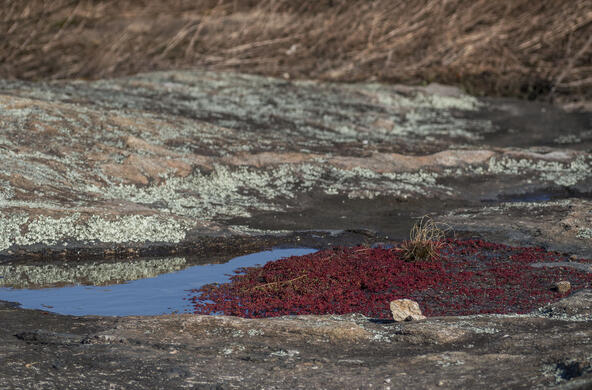(Washington) The Environmental Law Institute has announced that Dr. Stuart E.G. Findlay, received the 2015 National Wetlands Award for Science Research. Stuart and six other award recipients were honored at a ceremony at the U.S. Botanic Garden in Washington, D.C., on May 21, 2015. He also spoke at a water science briefing on Capitol Hill the morning of the ceremony. For more information, please visit: www.nationalwetlandsawards.org.

Dr. Findlay is a senior scientist at the Cary Institute of Ecosystem Studies in Millbrook, New York. For over 30 years, his research in the region has benefitted the Hudson River and the more than 10 million people who depend on the river for drinking water and recreation. Having contributed to more than 100 papers on freshwater ecology and restoration, his work focuses on near-shore habitats and tidal freshwater wetlands.
"Dr. Findlay's research has led the way to our current understanding of Hudson River Estuary wetlands' ecological processes and functions, the ways in which human and natural disturbances influence those dynamics, and their implications for managing or restoring these critical elements of the river system," said Sacha Spector, Director of Conservation Science at Scenic Hudson.
Seven years ago, Dr. Findlay helped initiate the Hudson River Environmental Conditions Observing System (HRECOS), a monitoring network of more than a dozen stations along the Hudson River estuary and its tributaries that record data every 15 minutes, including temperature, salinity, and oxygen levels.
HRECOS allows researchers to see, in real-time, the condition of the river. This tool has major implications for research due to the increasing impact of climate change and sea-level rise. Dr. Findlay explained, "The network gives us unprecedented access to river conditions. In the past, monitoring was constrained by our ability to safely sample from boats. Now we can see what's happening during storms, at night, when conditions are icy, even during hazardous spills. HRECOS is a powerful tool that will be used more and more in the future."
He also designed an interpretive display at the Walkway Over the Hudson State Historic Park that uses real-time HRECOS data to educate visitors about the Hudson River ecosystem. The Walkway is the world's longest elevated pedestrian span, attracting nearly half a million people annually. A goal of the Cary Institute is to help the public understand what is going on in the environment around them. "The Walkover display allows people to visualize environmental conditions in the river that is running right below their feet," said Dr. Findlay.
Preparing the next generation of environmental scientists is also a priority for Dr. Findlay. In addition to mentoring graduate students and lecturing at various universities, he has been a program director for the Cary Institute's Research Experience for Undergraduates (REU) program for more than 25 years. Each summer, National Science Foundation funding allows approximately 10 students to immerse themselves in an ecological research community. Slots are competitive; the Cary Institute receives more than 200 applications from around the country annually.
Working with a scientist mentor, REU students develop and execute projects, write papers, learn data analysis techniques, and present their findings. "It's a crash course in what it's like to be an environmental scientist. It's been very rewarding to see how many students go on to pursue careers in the field" said Dr. Findlay. Adding, "Our program focuses on the importance of interdisciplinary collaboration and communication. It gives me hope that the next generation will do a better job than we have in taking care of the place."
Dr. Findlay's knowledge and experience have also made him an often-consulted expert in region. He serves on advisory committees for New York Department of Environmental Conservation (NYSDEC), NOAA's Research Reserve, and the Environmental Protection Agency. "He is not a distant scientist in an ivory tower," said Frances F. Dunwell, Hudson River Estuary Coordinator for NYSDEC, "he is part of our community."
For more information about the other recipients of the 2015 National Wetlands Awards and pictures of the ceremony, please visit www.nationalwetlandsawards.org.
Every year, ELI recognizes excellence across a broad spectrum of areas of environmental law, policy, and management, both domestically and internationally. Honorees are typically individuals, but in some instances have been governments and institutions. By honoring exemplary service and achievement, ELI highlights the direct link between individual and collective actions and better environmental, economic, and social outcomes.
The Cary Institute of Ecosystem Studies is a private, independent, nonprofit environmental research organization located on 2,000-acres in New York's Hudson Valley. A world-premier center for ecosystem science, areas of expertise include disease ecology, forest and freshwater health, climate change, urban ecology, and invasive species. The science program is complemented by education, communication, and outreach initiatives.
The Environmental Law Institute makes law work for people, places, and the planet. With its non-partisan, independent approach, ELI promotes solutions to tough environmental problems. The Institute's unparalleled research and highly respected publications inform the public debate and build the institutions needed to advance sustainable development.





